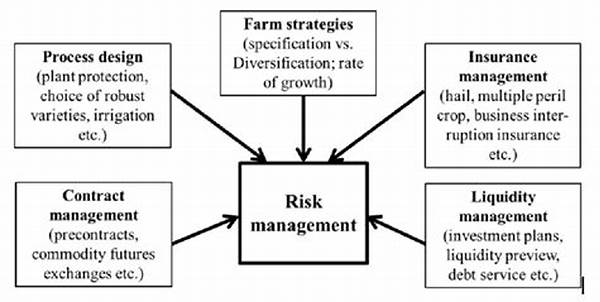Organic products have grown in popularity over the years, driven by the increasing awareness of health and environmental issues. But have you ever considered how sensitive these products are to price changes? Understanding the price elasticity of organic products is crucial for consumers and businesses alike. It sheds light on how demand fluctuates relative to price changes, driving consumer decisions, and influencing market dynamics.
Read Now : Crop Rotation In Organic Certification
The Importance of Price Elasticity of Organic Products
Understanding the price elasticity of organic products can save you money and make you a smarter shopper. If you’re committed to buying organic, knowing whether these products are elastic or inelastic when it comes to price can help you plan your budget effectively. If organic products are inelastic, a price increase won’t change demand significantly. But if they are elastic, a small hike in price could deter consumers from purchasing, which could lead to sales and discounts you want to look out for.
For businesses, recognizing the price elasticity of organic products is equally vital. Companies can adjust their pricing strategies based on this understanding. If the demand for organic products is elastic, a reduction in price could lead to a proportionally larger increase in quantity demanded, ultimately resulting in higher overall revenues. Therefore, strategic pricing decisions backed by knowledge of price elasticity can enhance profitability and market standing.
Governments and policymakers, too, can benefit from understanding the price elasticity of organic products. In planning subsidies or taxes, acknowledging how sensitive consumer demand is to price changes can guide more effective and targeted policy interventions. This can lead to increased organic consumption, offering health benefits to the public and fostering environmentally friendly practices.
Factors Affecting the Price Elasticity of Organic Products
1. Consumer Income: The price elasticity of organic products often depends on the income levels of consumers. Higher income groups might show inelastic demand, as price changes do not significantly impact their purchasing power.
2. Substitute Availability: If there are many substitutes available, the price elasticity of organic products may be high. Consumers can easily switch to non-organic alternatives if prices soar.
3. Necessity vs. Luxury: Products deemed necessities, even if organic, usually exhibit less elastic demand compared to luxury organic goods, as the former are indispensable to daily life.
4. Brand Loyalty: Strong brand loyalty can lead to inelastic demand as devoted consumers might continue purchasing despite price hikes, making the price elasticity of organic products lower.
5. Cultural Preferences: In cultures where organic products are highly valued, consumers might be less sensitive to price changes, reducing the price elasticity of organic products.
Price Elasticity of Organic Products: The Consumer Perspective
For the average consumer, the price elasticity of organic products determines how much of these products will be in their shopping cart. In many households, especially those prioritizing healthy lifestyles, organic goods are seen as essential. However, when prices rise steeply, even loyal consumers might reconsider their purchasing decisions. Understanding the elasticity of these products empowers consumers to make informed choices, adjusting habits according to market trends. Armed with this knowledge, shoppers can better anticipate price shifts and seek out promotions or alternative markets, ensuring their organic needs are met without breaking the bank.
Moreover, when price elasticity is high, consumers benefit from competitive pricing and more choices in the market. Retailers compete to offer the best prices, leading to sales, discounts, or bundled offers. Thus, being informed about the price elasticity of organic products doesn’t just make financial sense—it enhances consumer satisfaction and encourages a more sustainable market culture where demand and supply are perfectly balanced.
Economic Implications of Price Elasticity of Organic Products
1. Market Stability: Understanding the price elasticity of organic products contributes to stabilized markets by aligning supply with actual consumer demand.
2. Price Strategies: Businesses leverage knowledge about elasticity to design effective pricing strategies, optimizing both profit and customer satisfaction.
3. Consumer Choices: Greater understanding empowers consumers, prompting smarter purchases and promoting economic well-being at individual and community levels.
4. Sustainability: With a grasp of elasticity dynamics, businesses can align production with sustainable practices that meet demand without excess waste.
5. Competitive Advantage: Companies aware of elasticity trends can outperform competitors by adjusting their offerings strategically.
6. Pricing Models: Elasticity insights support the development of dynamic pricing models that cater to shifts in demand and market conditions.
7. Accessibility: Insights into elasticity can help make organic products more accessible to varied income levels by adjusting prices appropriately.
8. Innovation: Understanding elasticity encourages innovation in product offerings, leading to new organic products that meet diverse consumer needs.
9. Transparency: Educating consumers about price elasticity fosters transparency and trust between consumers and businesses.
Read Now : Organic Versus Conventional Crop Nutrition
10. Growth Investments: Recognizing elasticity aids investment decisions, ensuring capital is used effectively in high-demand areas.
Impacts of Price Changes on the Market
When evaluating the impact of price changes on the market, the price elasticity of organic products plays a pivotal role. Pricing adjustments, whether due to supply chain fluctuations, market demand, or competitive pressures, can significantly alter consumer behavior. An inelastic product means a price increase may not drastically change sales volume, assuring steady revenue for producers and retailers. However, with elastic products, even a minor price modification can lead to substantial shifts in consumer demand, affecting inventory, sales forecasts, and overall market stability. Understanding these dynamics ensures businesses can be proactive rather than reactive, shaping strategies that align with consumer sensibilities.
For consumers, elasticity informs purchasing strategies, enabling them to seek out better deals and understand when to buy bulk or stockpile essential goods. The price elasticity of organic products makes it crucial for consumers to stay informed and for businesses to monitor market signals closely. As global consumption trends evolve towards healthier, sustainable choices, deciphering the price elasticity of these goods will be essential in crafting a market that supports both economic and ecological sustainability.
Strategies for Optimizing Price Elasticity
Businesses can leverage their understanding of the price elasticity of organic products to develop strategies that optimize pricing, aligning with consumer expectations and maximizing revenue potential. Here are ten strategic considerations:
1. Diversified Product Range: Offer products at various price points to cater to different consumer segments.
2. Promotional Incentives: Use promotions strategically during periods of high elasticity to boost sales and attract budget-conscious consumers.
3. Enhanced Value Proposition: Increase perceived value to consumers through superior quality or ethical sourcing practices.
4. Detailed Market Analysis: Regularly analyze elasticity trends to stay ahead of market changes and consumer preferences.
5. Customer Education: Educate consumers on product benefits and sustainability aspects, reducing sensitivity to price changes.
6. Bundling Offers: Combine products in attractive bundles to offer better value and leverage cross-selling opportunities.
7. Loyalty Programs: Cultivate brand loyalty through reward programs that minimize the impact of price changes on purchasing behavior.
8. Segmented Pricing: Use differentiated pricing strategies based on demographic or geographic segments to optimize sales.
9. Feedback Mechanisms: Implement feedback loops to capture consumer responses to price changes and adjust strategies accordingly.
10. Innovation and Differentiation: Continually innovate with new product offerings that capture consumers’ interest and reduce the impact of price sensitivity.
Successful execution of these strategies requires a deep understanding of the price elasticity of organic products, enabling businesses to navigate the complexities of consumer preferences and market conditions effectively.
Summing Up Price Elasticity of Organic Products
In the grand scheme of the consumer market, the price elasticity of organic products remains a crucial factor that influences purchasing behavior, market pricing, and economic stability. For consumers, understanding elasticity offers empowerment over their purchasing choices, allowing them to navigate the organic market smartly and cost-effectively. Businesses, on the other hand, can capitalize on this knowledge to enhance their pricing strategies, ensuring profitability while meeting consumer demand seamlessly.
In conclusion, as the shift towards sustainable and healthy living gains momentum, the organic market’s growth will be intrinsically linked to insights drawn from elasticity studies. Both consumers and businesses will benefit from a comprehensive understanding of the price elasticity of organic products, fostering a market where affordability, quality, and environmental consciousness intersect harmoniously. By leveraging this knowledge, we pave the way for a future that supports health, sustainability, and economic growth simultaneously.



